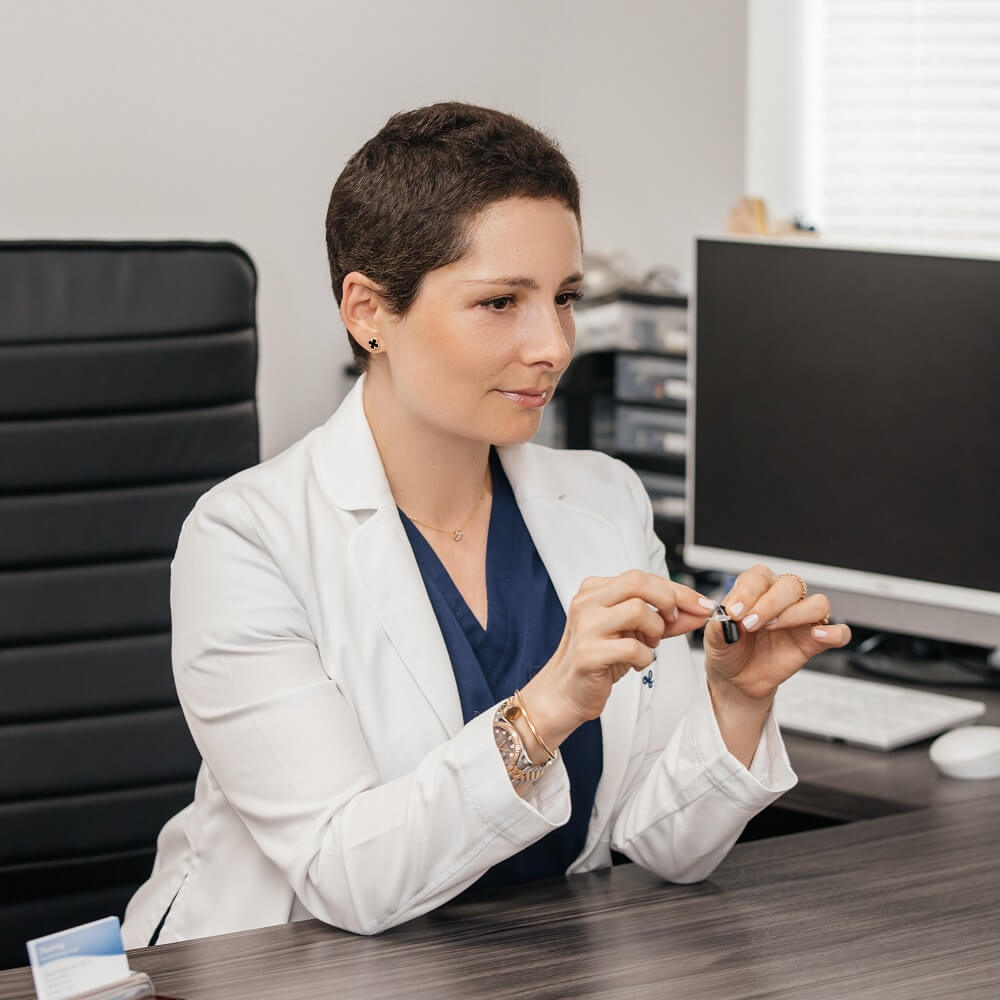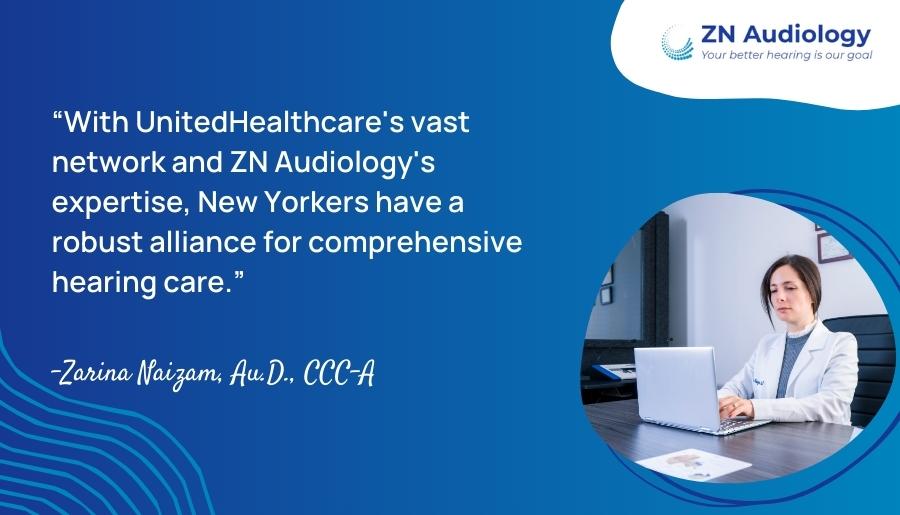Assistive Hearing Technology for Brooklyn, NYC
Hearing aids provide the best solution to hear better and continue enjoying an active and independent lifestyle, but there are instances when hearing aids don’t provide enough help or the right kind of help.
Whether you already wear hearing aids but want a little extra help in certain sound environments or you’re not quite ready for hearing aids, ZN Audiology is able to help fill in some of the gaps in your ability to communicate in public and private settings with assistive hearing technology.

Frequently Asked Questions About Assistive Listening Technology
What are the different types of assistive listening technology available?
There are two types of assistive hearing technology: assistive listening devices (ALDs), which provide a personal connection to audio sources, and assistive listening systems (ALSs), which help individuals with hearing challenges in public places like theaters and lecture halls.
What are the different types of assistive listening systems available?
Many theaters, airports, churches, lecture halls, and various public places provide assistive listening systems (ALSs) to help improve the experience of those with hearing challenges. Common ALSs include:
- Hearing Loops, which connect to public address systems via a loop driver, providing wireless sound transmission to hearing aids, cochlear implants, or receivers worn on the body by using T-coil technology
- Radio Frequency (FM or DM ALS) systems, which transmit wireless, low-power FM frequency radio transmission from a sound system to FM receiver
- Infrared Systems (IR), which transmit speech or sound from a public address system by sending invisible infrared light waves to an IR receiver
Are assistive listening devices covered by insurance?
Can I use an assistive listening device with my hearing aids or cochlear implants?
Are there any government programs that can help with the cost of assistive listening devices?
Many state and local government agencies, as well as the Veterans Health Administration, provide some assistance for assistive listening devices to individuals who qualify. The Hearing Loss Association of America (HLAA) provides information regarding public and private financial assistance available.
Why are ALSs necessary?
When we are hard of hearing, we need a volume (defined as the signal-to-noise ratio) increase of about 15 dB to 25 dB in order to achieve the same level of understanding as people with normal hearing. ALSs allow us to achieve this gain in volume without overwhelming other people around us.
Who can benefit from ALD and ALS?
Candidates for ALDs typically experience the following difficulties:
- Straining to hear during conversations
- Fatigue or frustration after engaging in a conversation
- Difficulty hearing the television or radio at a volume that is comfortable to those around them
- Loved ones and friends “mumbling” all the time
- Asking others to repeat themselves more frequently
- Speaking loudly or shouting during normal conversation
- Hearing better with one ear
- Jumbled words and sentences during conversation
- Difficulty hearing in theaters, lecture halls, classrooms, locations with PA systems, etc.
Many of these signs are also signs of hearing loss, so before purchasing an ALD system, consider a comprehensive hearing assessment from ZN Audiology.
What are the different types of assistive listening devices available?
The purpose of an assistive listening device is to boost the “speech-to-noise ratio” in personal settings, but many can also help separate the sounds you actually want to hear from background noise in order to improve the listening experience for the hearing aid user. Common ALDs include:
- Direct Audio Input Hearing Aids. A non-prescription hearing device that uses direct audio input connections from TVs, stereos, radios, microphones, auditory trainers, personal FM systems, and other assistive devices to route sound from the source to the listener.
- Telephone Amplifying Devices. Allow the volume of a standard telephone receiver to be used with or without hearing aids in order to help minimize background noise by using T-coil technology.
- Cell Phone Assistance. Most modern hearing aids are being manufactured with cell phone connectivity options that allow you to pair your cell phone to your hearing aids by using Bluetooth technology, providing a “hands-free” experience as well as better binaural (both ears) hearing clarity.
How do I know which assistive listening technology is right for me?
Do I need a prescription to purchase an assistive listening device?
Can I use an assistive listening device without a hearing test or audiogram?
What do assistive listening devices do?
These tools help to address listening challenges in three key ways:
- Minimizing background noise
- Reducing the effect distance has on a sound source and the deaf or hard of hearing person
- Overriding poor acoustics
It's helpful to think of ALDs as amplifiers that bring sound directly into the ear. They also separate the sounds—particularly speech—that a person wants to hear from background noise. As a result, they improve what is known as the “speech-to-noise ratio"—making it easier for a person with degrees of hearing loss to hear.
What are the basic components of ALS?
Each ALS has at least three components:
- A microphone
- Transmission technology
- A device for receiving the signal and bringing the sound to the ear
Where are ALSs used?
Assistive Listening Devices From ZN Audiology
If you have unique needs that aren’t being addressed by your hearing aids, or you aren’t quite ready for hearing aids, an assistive listening device can fill in the gaps so you can hear better in a variety of different sound environments.
If an assistive listening device sounds like a solution you want to discuss, ZN Audiology can help. We carry assistive hearing instruments that work in addition to or in place of hearing aids if needed. We also understand the difficulties of addressing and living with a hearing loss. That’s why our #1 goal is to help you overcome those challenges so you can enjoy a more complete and satisfying life.
Schedule an appointment using the button below to see how we can help.




